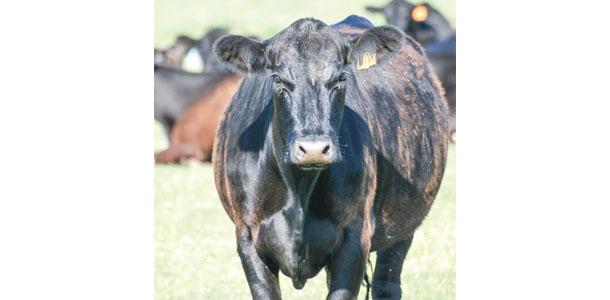Every producer strives to improve these areas, and two key factors play an undeniable role: body condition score (BCS) and the nutrition required to maintain that desirable BCS score.

Body condition is a good indicator of energy status and reproductive potential, making it essential that cows be in the right condition at the right time.
Cows calving with a BCS of 6 return to estrus earlier than those that calve with a BCS of 5 or less, with an average of a 16-unit increase in conception rate in a 60-day breeding season. It is clear a difference in condition scores at calving can make a significant difference in reproduction.
So how do we ensure cows are maintaining or gaining weight prepartum or postpartum, if needed? What strategies can be implemented to potentially reap the benefits of a shorter interval to estrus, an increased pregnancy rate and a heavier calf weaning weight?
Capturing the data
It’s been said, “What gets measured, gets managed,” and that holds true for cow management, especially when it comes to body condition scoring. You should body condition score your cow herd four to six times per year.
Taking the time to score forces you to look at the data and address management issues that may arise. You might find yourself asking: Are my cows OK pre-calving? Do I need to make a change? Should I move them to a better pasture? Feed better hay? Do I need to feed a supplement?
These are the types of questions that should arise from body condition scoring, and most of these questions can be answered with a change in nutritional strategy.
Body condition scoring should be completed at weaning, with a score of 5 as the goal. Weaning is a critical time to score, as you’re approximately 90 to 120 days away from when the cow is going to calve again. From that point, you have 90 to 120 days to do something about her condition.
You should also record scores at 60 days pre-calving, at calving, 30 days post-calving, when the bull is turned in (or before A.I. or ET) and, finally, at 30 days post-breeding.
It’s recommended that cows calve at a score of 6, with limited fat in the tailhead and brisket, no ribs showing, good muscle in the shoulders and hindquarters, while being rounded across the top of the back.
Generally, it’s extremely costly to try to put condition on cows after they calve because their nutrient requirements are so high. By taking body condition scores year-round, you can help ensure your cows are in the right body condition score at the right time and that you’re not playing catch up during a critical time frame pre-calving or post-calving.
Know your forages
You’ve measured your cow herd’s condition, and now it’s time to measure the quality of your forages. A forage analysis is the only way of knowing the protein, energy and mineral content of a particular grass, pasture or hay; thus, it’s the only way of knowing if you’re meeting the nutritional needs of a particular group in the herd.
If forages are running under 10 percent protein and under 50 to 55 total digestible nutrients (TDN), then you likely don’t have enough protein and energy to support the cow and her calf.
The majority of producers across the U.S., unless they have some high-quality forages stockpiled, are not above those levels and will need to find additional nutrient sources.
Post-calving is the time of greatest nutritional requirement for the cow, so based on your forage results, you’ll want to feed your best hay or pasture to the group of cows that are calving. First-calf heifers require an even greater nutrient density.
Addressing supplement needs
We know the body condition scores on the herd, and we know what our forage quality looks like. The final step is determining if the forage we’re feeding our cow at BCS of “X” is enough to maintain or gain condition. If the answer is yes, then you’re on the right track.
If your forage is not substantial enough to hold or increase body condition score (if needed), then it’s time to implement a supplement program that can help do so.
A high-quality supplement will have protein, energy, calcium, phosphorus and a good trace mineral package. These key ingredients, in a balance, are absolutely essential when it comes to body condition. They are also needed to maintain a healthy cow and calf, and allow the cow the reproductive ability to breed back quickly.
While some producers shy away from the expense of a supplement, it’s critical to remember the difference that even a single point in body condition score can make. With the current beef market, you likely can’t afford an open cow or limiting the growth of a calf because its dam is not getting the nutrition she needs.
Nutrition drives body condition, and body condition drives reproductive performance and calf weaning weight. Body condition scoring is an invaluable tool at any stage of the cow’s production cycle.
By recording BCS data you can start evaluating nutritional strategies and use a forage analysis to help determine if your forage’s nutrients are enough to sustain and gain condition. Only then can you determine if additional supplements are needed to make sure your cows are set for success. ![]()
PHOTO
Body condition scoring is an invaluable tool at any stage of the cow’s production cycle. By recording BCS data you can start evaluating nutritional strategies and determine if additional supplements are needed. Photo courtesy of Purina Animal Nutrition.

- Lee Dickerson
- Director National Accounts and Cattle Distribution
- Purina Animal Nutrition






